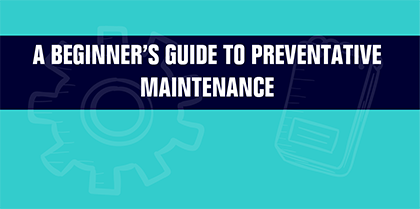
Pavement surface raveling is the progressive loss of aggregate from the pavement material, which begins with fine aggregate from the surface down.
Even the most well-designed asphalt pavement system can’t escape the effects of Mother Nature. Facility owners and managers are often challenged with making financial decisions on how to implement a program that’s best suited for their needs. Pavement that is appropriate for preventive maintenance applications includes systems that are relatively new, when preservation of the pavement system remains cost effective. These pavement systems will generally be 3 to 7 years old, and may be experiencing the early stages of deficiencies, such as surface raveling and pavement cracking. Protecting asphalt pavement systems from environmental factors, such as water penetration into the base through cracks and fissures, along with oxidation of the pavement’s upper surface, can add years to the life of the pavement system. Preventive maintenance isn’t effective for pavement that exhibits structural deficiencies or failures.
As a facility owner or manager, the objective of protecting your pavement investment should start with planning a pavement-management program. The approach for parking-lot-asphalt pavement-management programs should always include crackfilling and sealcoating as a staple service throughout the life of the property.

Multiple applications of coal-tar sealer cause surface-map cracking.
CRACKFILLING
Crackfilling typically refers to the process of blowing out and cleaning cracks prior to installation of a crackfiller material. This is also known as the “blow-and-go” method. If properly done, crackfilling reduces the infiltration of water into the crack, which protects the pavement system from being weakened by moisture. Crackfilling should be used for wider-type, non-working cracks.
Materials for crackfilling can be asphalt emulsions, asphalt cements, fiberized asphalt, or polymer-modified emulsions (listed in the general order of increasing material performance properties and costs). Life expectancy for crackfilling applications is less than 3 years. This method provides benefits by preventing water intrusion through the crack, which can weaken the aggregate base and sub-grade materials. If there are shorter-term expectations and considerations for major pavement rehabilitation in the next few years, crackfilling can be a lower-cost approach that meets these goals.
As a proactive facility owner or manager, the next obvious question is: “What else can I do to assure that I’m getting the greatest return on my asphalt investment?” Surface-treatment applications are more complicated than cracksealing; pavement conditions and their end use will influence the type of application. These two issues are further compounded by the climate in which the pavement is located. The fundamental benefit for the application of a surface treatment is to extend the life expectancy and performance of the pavement. It’s important to understand the different types of surface treatments, and that it’s not the function of a surface treatment to provide any structural improvement.
SURFACE TREATMENTS
There are many surface-treatment options to choose from. General categories of surface treatments include:
- Coatings (asphalt or coal tar emulsions).
- Penetrating or rejuvenating sealers.
- Aggregate-based seals (e.g. slurry seals, chip seals, and micro-surfacing that provide a wearing surface).
Coating products date back many years with the development of coal tar emulsion coatings. Coal tar is a byproduct of the production of coke from coal. The molecular structure of coal tar gives it the fuel-resistance properties that were desirable. These surface-treatment products were developed to be resistant to petrochemicals and solvents for use in areas susceptible to fuel and oil drippings/spills. The federal government developed requirements for these products for use in aviation applications. The RP-355d requirements are still commonly referred to in the sealing industry today, and the standard has been modified for compliance with ASTM D5727.
Asphalt emulsion coating products are newer to the industry. These products are comprised of hydrocarbon-based bitumen. The molecular structure of asphalt emulsions isn’t as resistant to fuel or oil, but modifiers and additives can improve this characteristic. Asphalt emulsion products have an advantage over coal tar in the installation process because fewer odors and less risk of skin burning or irritation occur from asphalt – this is due to the difference in the chemical composition of coal tar and asphalt products.
Rejuvenating or penetrating sealers are products intended to, as the names imply, penetrate and rejuvenate the surface of an asphalt pavement. These materials are asphalt based, blended with water or cutbacks that allow them to soften the surface of the pavement to penetrate the surface layer. This increases the pavement’s flexibility, mitigating the impact of environmental aging.

Multiple applications of coal-tar sealer cause surface-map cracking.
As with cracksealing, for the best economic value, applications of surface treatments should be performed only when pavement is relatively new and in good condition. The oxidative aging of asphalt pavement begins at the time of construction and continues through the pavement’s life. The greatest rate of oxidation, however, occurs within the first few years. Implementation of a surface treatment has the potential to reduce the impact of environmental aging of the pavement, mitigate the impact of surface raveling, and fill hairline cracks that are too small for cracksealing.
In some situations, using these products may make significant wear obvious (which can be variable) within the first 12 months, especially in the snowbelt region. Roadways, drives, and aisles in parking lots have a tendency to wear much faster than parking stalls. If you choose to use these products to improve the aesthetics of your pavement, the frequency and cost of future applications will increase. The lives of these products vary, but general expectations will be approximately 3 years.

Jim – sorry for the delay on this one! Thank you very much for the kind words! We’ve worked hard along with our designer to get the right and look and feel. We continue to add content regularly, so make sure you book mark!
Again – thanks for taking the time to drop us a note, we really appreciate it!